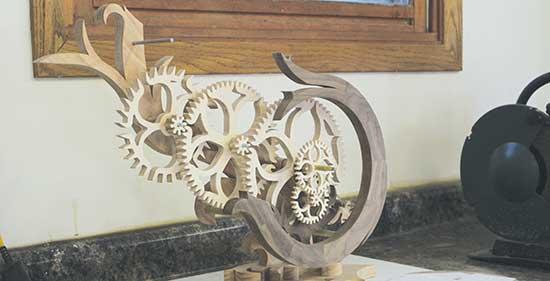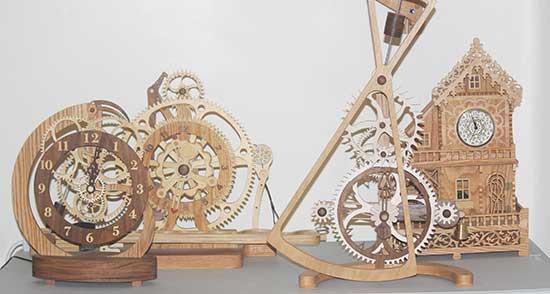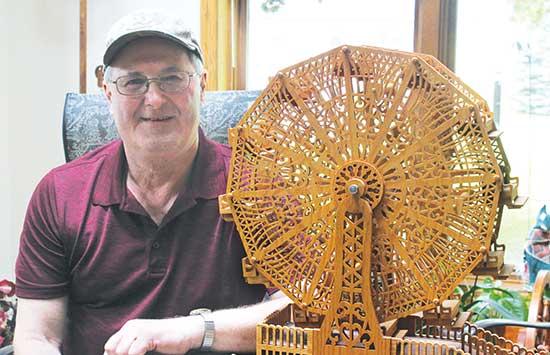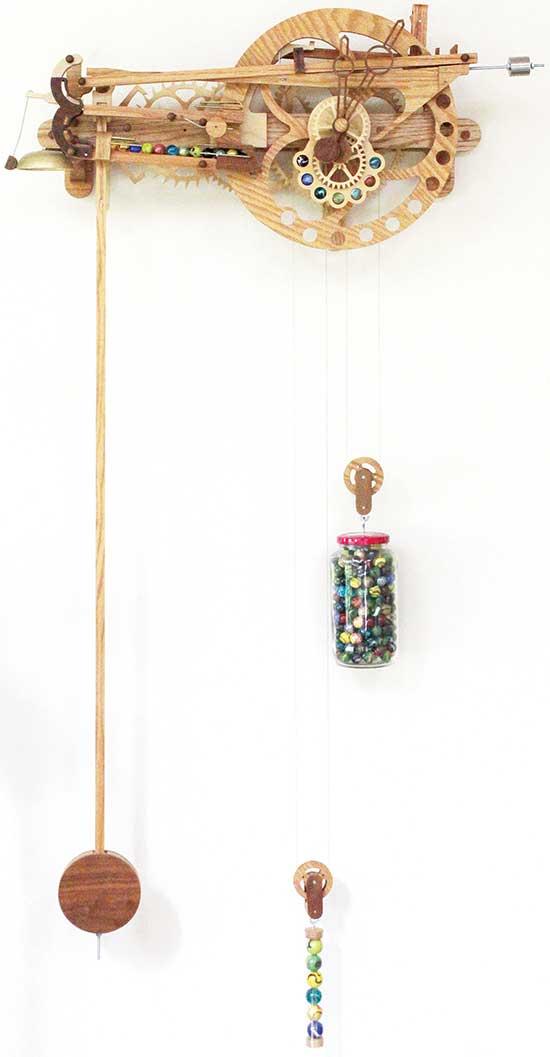Just like Clockwork
How amazing it must have been to see the first, patented clock with hands and a numerical face. After centuries of managing time before a face clock, it must have been a truly fascinating discovery.
Before, man measured the art of keeping time in other, more trivial ways.
The sundial, perhaps the earliest form of keeping time, was perfected even before the Egyptians, though a more advanced use of them was identified within Egyptian culture as early as 1500 B.C.
Water clocks were another form of time management. Developed by the Greeks, these are perhaps the earliest forms of keeping time that did not require study of a celestial body, like sundials did. Primarily used to determine the hours that passed through the night, they could determine the time over the day as well, and are recorded as early as 325 B.C.
It stands to reason that even in the ancient world, man has had a fascination with time measurement and how we keep it. While many of us leave the measurement of time to the experts, there is a rare breed of us who not only are fascinated with this art, but also how it is conveyed.
Who might be fascinated with clocks, you might ask? Meet Bruce Otten, of Buffalo.
Bruce Otten
Not much more than a stone’s throw from Buffalo Lake is Bruce Otten’s home. Usually a place of presumed quiet and tranquility, the house echoes with the familiar summer sounds of road construction of Lakeview Drive, where a studious team works on what appears to be a repaving project.
However, construction is the least of what Bruce wants to discuss. With a bright smile, he welcomes you into his workshop, which is actually a pristine garage. Wall-to-wall are woodworking tools and machinery, and directly in the middle of the room is a slightly-intimidating scroll saw.
These, Otten shares, are his woodworking tools. For about five years, Otten has been fascinated with the art of constructing wooden clocks – and by wooden, he means entirely wooden, gears and all.
“My gears, most often, are made of plywood,” he shared. “It makes for a truly original, and beautiful, timepiece.”
The art of constructing clocks entirely made of wood is not unusual. Otten does not hesitate to showcase where he got his start – a glossy-covered book with a wooden clock, bearing all wooden gears. Vastly intrigued by this design, Otten decided to duplicate the clock featured on the front page.
The rest, as they say, is history.
“It was so mentally stimulating and challenging,” he explained. “But it was also really relaxing, and I got a lot of enjoyment out of this. You really slow down and focus on the work, which requires a lot of patience.”
A CNC machinist by day, Otten feels that working with wooden materials is another fulfillment of being a man of the trades. He wanted to work at something that would give him equal fulfillment as working with metals did, but with another material.
To date, Otten has at least a dozen clocks, all made by his own hand. He follows print designs, which he buys from designers. However, the catch is that hardly any of the prints call for materials, and it is up to the crafter to determine what type of wood will be used, which can definitely affect the clock’s turnout, if not gauged properly.
“Some woods manipulate different than others, so it’s important to realize what type you are using,” Otten explained. “They’ll [the prints] usually let you know how thick you need to cut a part, so that gives you some idea of what you want, most times.”
Otten buys his designs from designers all over the U.S. He’s bought prints from Hawaii, Wisconsin, and other areas. All of his materials are acquired as locally as possible, though there are occasions where Otten ships them in from Wisconsin, and other states.
The Clocks
The clocks themselves are mostly run by weight. Otten has a variety of designs that utilize this concept – one which keeps time with the use of marbles, another with the use of metal balls. Then, there are other timepieces, which are traditional cuckoo clocks, and are more difficult to build because of the cuckoo mechanism.
“What is unique about this hobby is to have the finished product, as well as the print,” Otten said. “Because with some of these, you might never get another chance to get another print ordered. To have the completed product and then know you can go back and make it again is special.”
For instance, Otten has a railroad-themed clock that has flashing lights, with ornately-designed locomotives carved into the wood. The mechanism that makes the light flash is no longer available since the designer has since passed away, so this particular build of Otten’s will be his only one with working lights. However, he could make another without the light mechanism, thanks to his copy of the print.
“If I wouldn’t have copies of it, it could be a design that is simply lost with the designer,” he said. “And that’s a shame, because it is a beautiful piece.”
The fulfillment of a job well done comes for Otten from hours of time invested into something so precise. Seeing it all come to life, after hours and weeks of dedicated effort, is a proud moment for him. And it is well-earned, since many of the clock’s parts take an average of six weeks to cut, and then another three weeks to troubleshoot and construct.
“Things rarely work the first time,” Otten said with a chuckle, “so you factor in more time when things go south. Heaven forbid you have to re-cut a piece, because that can be a significant setback.”
For him, he’s learned patience in his five years of wooden clock construction. Patience, precision, and a lot of determination are all skill sets he has grown from this hobby.
“There is a lot to be said for precision. It takes patience, determination, and wherewithal to see this done, especially when you do it only a few hours here and there after work. It just doesn’t simply happen – it takes planning, and execution to get it done. That’s why I think I enjoy them so much.”
So far, Otten has kept all the clocks he has made, though eventually he thinks he’ll revisit some of his designs and make them for family members. For now, his current project is a pendulum clock, constructed out of beautiful wood, the likes of black walnut, red oak, and more.
“I think anyone who has a mind for patience can do this,” Otten shared. “Sure, you have to learn the tools and how to work with your hands, but that comes with practice. The skill, in my mind, is having a mind for patience and determination to get it done.”
Otten also commented that woodworking is just like any skill, and with practice and hard work, anyone can see success and progress.
Bruce and his wife Debra currently reside in Buffalo, as they have for many years.
Bruce will continue pursuing clock construction in his spare time, while his family will continue to ask him just how many clocks he needs, exaclty.




